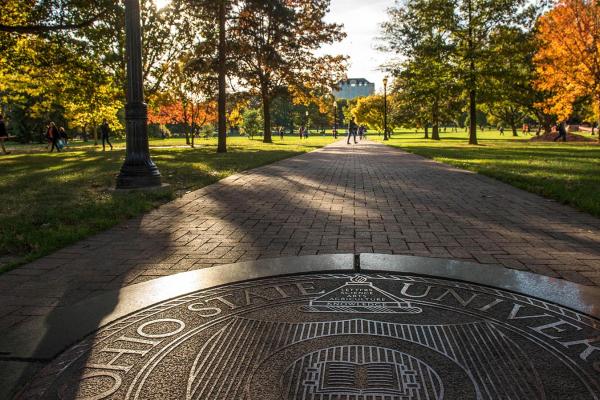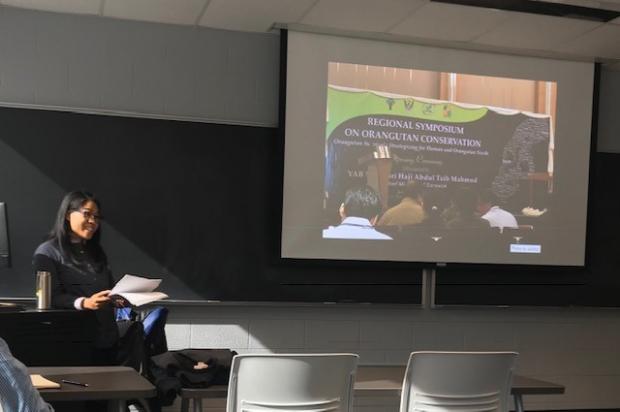“Sensing Seconds and Epochs with Semi-Wild Orangutans and their Caretakers: A 21st Century Ethnographic Approach to Cross-Disciplinary Anthropology”

Conservation efforts are becoming increasingly urgent, making Juno Parreñas' talk about orangutan conservation efforts in Sarawak timely—and the temporal scales between the epochs was indeed a focus of her talk Sensing Seconds and Epochs with Semi-Wild Orangutans and their Caretakers: A 21st Century Ethnographic Approach to Cross-Disciplinary Anthropology, presented October 19th and sponsored by the Department of Anthropology.
Dr. Parreñas, an Assistant Professor of Women's, Gender, and Sexuality Studies, and an affiliated Assistant Professor of Anthropology at The Ohio State University, delivered a beautifully crafted talk that bordered on the edge of poetry and focused on orangutan conservation efforts through the eyes of the facility caretakers, and the experiences of the captive orangutans. Dr. Parreñas captivated the audience and gave the listener a lesson on orangutan history from the Holocene through the present Anthropocene as well as the role humans play around the responsibilities that surround their status as endangered.

While many people view conservation efforts as heroic, Dr. Parreñas' talk provided another—often darker—side. In captivity orangutans, and specifically her focal primate Gas, suffer. In the wild these primates are solitary, but in captivity a female is at times trapped in a cage with a male and subject to forced copulation in the name of conservation. Dr. Parreñas provided a powerful image of the female, Gas, caged with a male who was asleep firmly gripping her arm, while she stared off wide awake and looking afraid. The image incited emotion and empathy from the audience; it demonstrated how complicated our conservation efforts can be. Conservation often triggers happy thoughts: let's save all of the animals! Dr. Parreñas challenged our perspective and added the story of one of the keepers at the wildlife center, Lyon.
Lyon disliked how the palm oil industry's typically blames the collapse of the orangutan population on indigenous groups' hunting in the area. He pointed out there were "no guns in the longhouses!" It is interesting to consider that the industries that contribute to deforestation, ruining any chances for orangutans to be reintroduced into the rapidly disappearing forest, create a culture of oppression. Rather than accept responsibility, these industries find it easier to scapegoat marginalized peoples and perpetuate local prejudices. Yet, I digress from Dr. Parreñas' talk. After a dam was placed in the area, the surrounding forest flooded, leaving generations of mammals to die. Lyon and his team trapped and released wildlife as the water levels rose. Unfortunately, and quite sadly, Lyon was hospitalized soon after and died of acute melioidosis—a bacterial infection that can kill plants and animals within a week. Perhaps one might say that conservation efforts contributed to his death.
Overall, Dr. Parreñas believes that orangutans can perhaps survive the Anthropocene, but she questions whether their survival will mean something very different for the future. Currently, orangutans are subjected to stress and trauma, which she argues can affect generations to come. Dr. Parreñas does not argue against conservation efforts, but rather to consider the complexities of conservation and the quality of life orangutans live as we adopt new models for conservation.
By: Emily J. Wolfe-Sherrie
